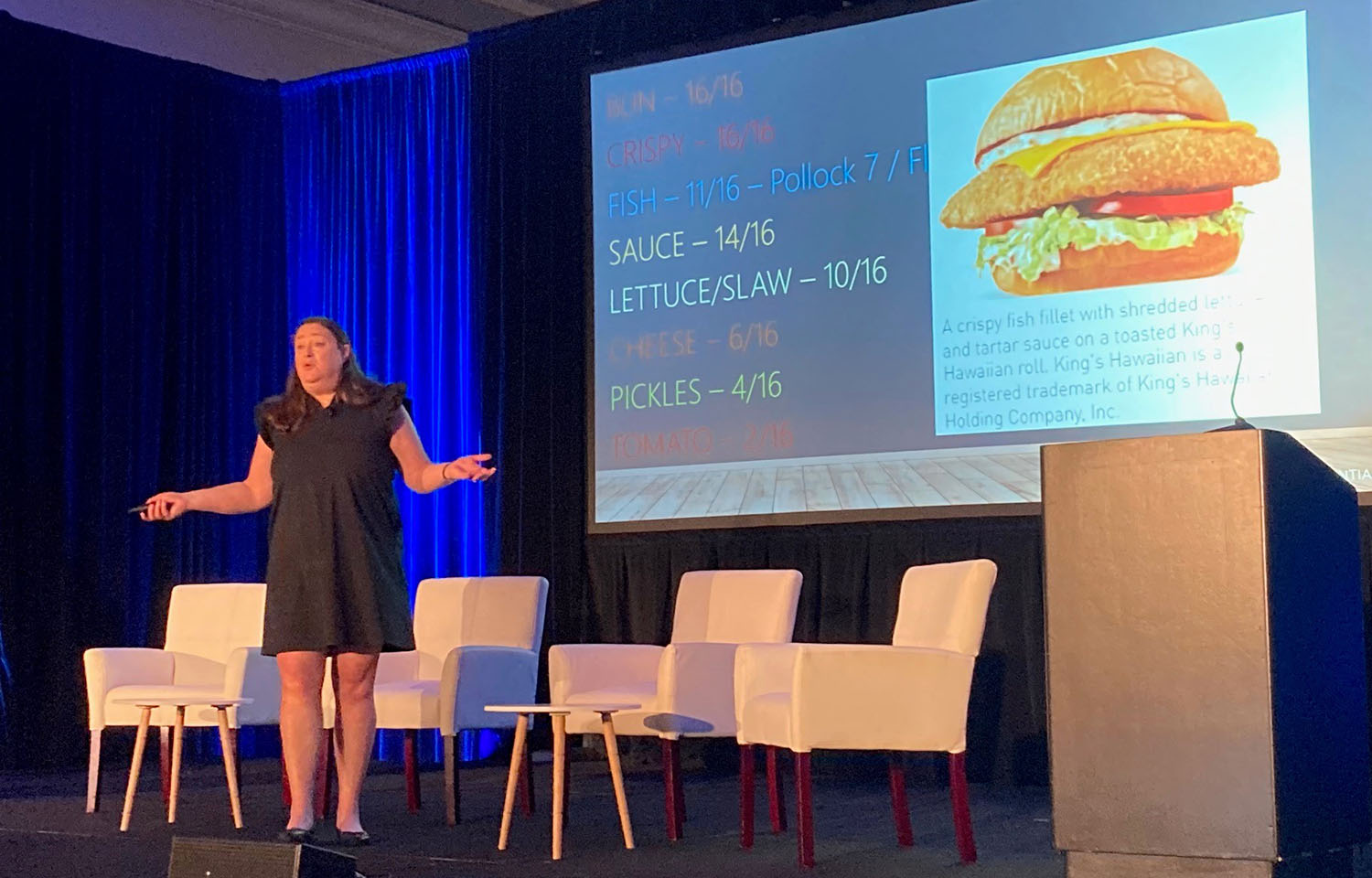Fish is not the most beloved protein in the U.S. market, but Datassential Vice President of Customer Experience Kelley Fechner believes that with a bit more visibility, it could start climbing up the rankings for many consumers.
In Datassential’s most recent survey of American protein preferences, 61 percent of the U.S. population said they love chicken. Bacon was second at 59 percent. Shrimp lagged behind at 49 percent, and fish was even lower at 39 percent.
The tastes of those who already love seafood also varies widely, according to Fechner, pointing to generational differences between baby boomers who prefer fish and chips, compared to millennials, who prefer garlic shrimp with parmesan toast, and Gen Z survey respondents, who expressed a preference for shrimp in a mild chili sauce.
“People want different flavors based on their generation,” Fechner said.
However, among every demographic group, there is room for improving the metrics of how many people eat seafood and how often they order it at restaurants, Fechner said.
Armed with Datassential’s rich vault of survey data, Fechner shared ideas on how to do so at the 2024 Global Seafood Market Conference on 25 January in Orlando, Florida, U.S.A.
Specifically, Fechner pointed to quick-service restaurants (QSR) as a prime vessel for getting more Americans to love seafood.
“There is high menu penetration of seafood at casual dining and fine dining, but it is lower at QSR,” Fechner said. “[With the economy], people say they are trading down to cheaper restaurant meals. [While dining at QSR] makes it more affordable to go to restaurants, seafood has a lower menu penetration. This puts seafood on its back foot, [as consumers] are visiting restaurants that might not even have seafood on the menu.”
There are some affordable bright spots, though, as Fechner said single-bowl meals have gained menu penetration over the past decade and can be a less expensive option for restaurants to make and consumers to purchase. They’re also flexible and can fit practically any type of cuisine.
“It might be a mac and cheese bowl with protein on top, a teriyaki bowl with chicken or salmon, a burrito bowl, or even Mediterranean or donburi,” Fechner said. “Consumers love bowls, and this is just a great way to try new and inventive items to get consumers in the door and excited about seafood.”
Fechner reported 45 percent of general consumers like or love bowls, but of consumers who have tried a bowl, 73 percent reported liking or loving it.
“If you get someone to try a meal in a bowl, they like it – especially when they get to build it themselves,” Fechner said. “Bowls appeal specifically to younger consumers, and that’s a key demographic to get into enjoying seafood.”
Bowls are one of the few meal types that has been gaining menu penetration on U.S. restaurant menus, moving from 28 percent of menus to 36 percent over the past 10 years. Fechner said 55 percent of fast-casual restaurants have some sort of bowl on their menu.
Across U.S. restaurant menus, 21 percent of bowls served shrimp as the featured protein, while 16 percent contain salmon and 13 percent have tuna. Fechner highlighted two of her favorites: a surf-and-turf bowl from Qdoba with shrimp, steak, and guacamole and a Baja chimichurri bowl with Argentinian red shrimp served at Rubio's.
Fechner also said limited-time offerings (LTOs) can be an exceptional ...
Photo by Cliff White/SeafoodSource








